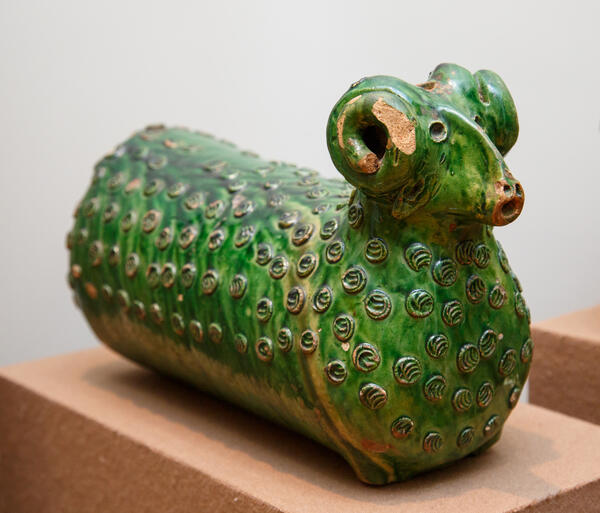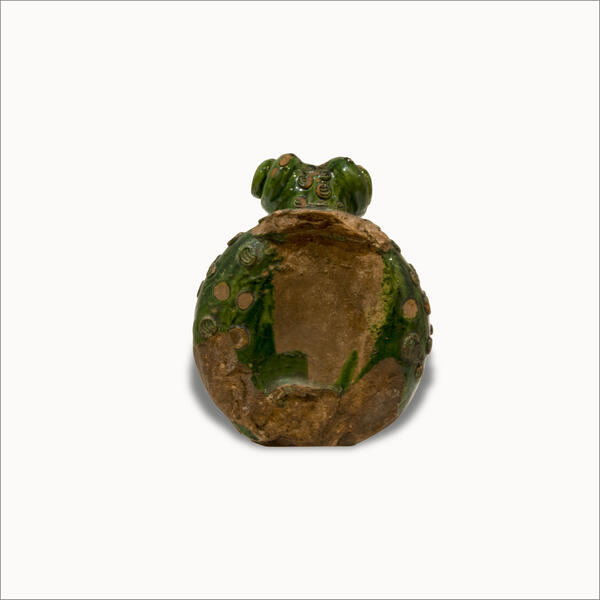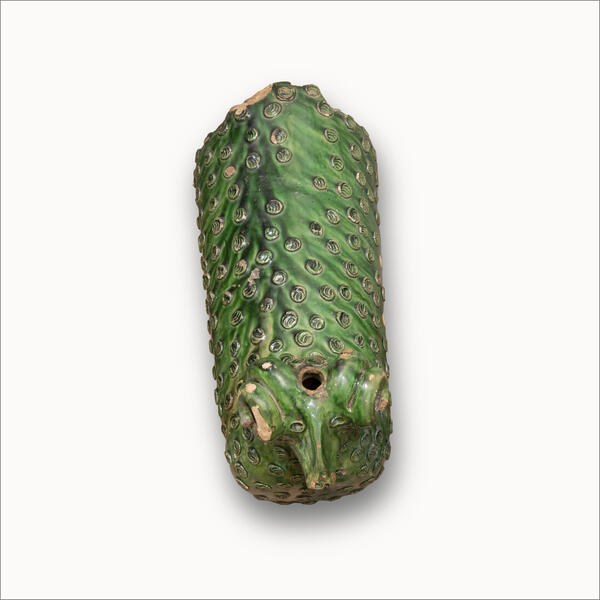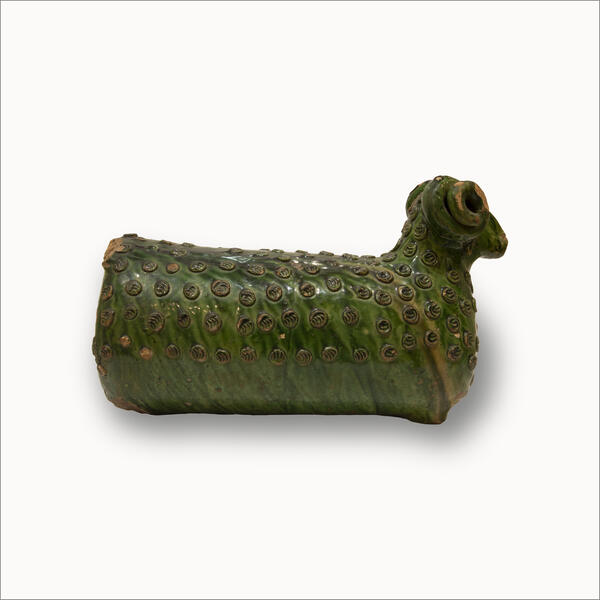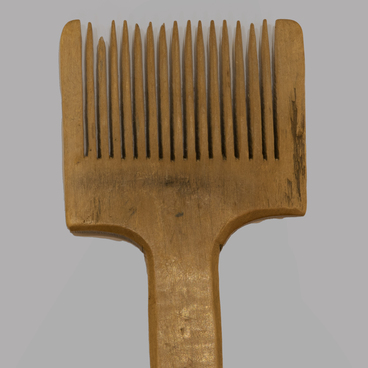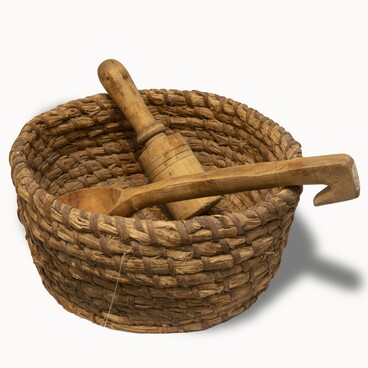A kvassnik, also known as a lugunok, is a special pottery vessel that the Don Cossacks used for storing kvass, wine, moonshine, oil, honey, and other liquids. The vessel could have various shapes such as a lion, a dragon, a firebird, and other animals. This kvassnik is made in the shape of a ram and has two holes in its head. One is designed for filling the vessel with liquid and the other one is for air.
In hot weather, the Don region’s residents always prepared refreshing drinks. They were brewed and infused using various natural ingredients. The main drink was bread kvass. It was used both for drinking on its own and for various summer recipes such as the cold soup called okroshka.
Kvass was served at festivals, funerals, and when receiving guests. Whenever someone entered a house, they were invited to dinner, treated to a large meal, and a drink of chikhir (insufficiently fermented red wine), or kvass. The drinks were served in pitchers and stored in ceramic kvassniks.
Pottery vessels were valued for their ability to preserve dairy products, fruit drinks, water, and other liquids. They were produced everywhere because clay was an easily available material. Pottery belonged to traditional Cossack crafts. People passed down pottery traditions through the generations, improved the techniques and processing methods, and developed certain forms. First and foremost, pottery served practical purposes. However, craftsmen also strove to decorate it with painting and simple relief ornament.
Potteries were built to produce ceramic vessels. These were small houses partly located below ground. They consisted of a studio and room for drying the products. Clay was placed in a special hole nearby. It was soaked for several days and then battered. A kick-wheel was used to shape the products by using a “drawing” method: a potter would take a lump of clay for the entire vessel at once and rotate it, giving it the necessary shape with their hands. The ready products were dried and then fired in a furnace dug out in the ground. The most valuable type was the glazed pottery.
For example, the potters of the Merkulovsky hamlet covered their products with lead glazing. To do that, they burned lead over in a small iron pot, turning it into litharge. This powder was used to dust products greased from the inside, and then the vessels were put into the furnace. Smelted in the fire, lead particles would slide down and spread in uneven sparkling flows, forming an ornamental pattern on the vessel’s walls. By getting inside the pores of ceramic vessels, the litharge improved their strength and water resistance.
In hot weather, the Don region’s residents always prepared refreshing drinks. They were brewed and infused using various natural ingredients. The main drink was bread kvass. It was used both for drinking on its own and for various summer recipes such as the cold soup called okroshka.
Kvass was served at festivals, funerals, and when receiving guests. Whenever someone entered a house, they were invited to dinner, treated to a large meal, and a drink of chikhir (insufficiently fermented red wine), or kvass. The drinks were served in pitchers and stored in ceramic kvassniks.
Pottery vessels were valued for their ability to preserve dairy products, fruit drinks, water, and other liquids. They were produced everywhere because clay was an easily available material. Pottery belonged to traditional Cossack crafts. People passed down pottery traditions through the generations, improved the techniques and processing methods, and developed certain forms. First and foremost, pottery served practical purposes. However, craftsmen also strove to decorate it with painting and simple relief ornament.
Potteries were built to produce ceramic vessels. These were small houses partly located below ground. They consisted of a studio and room for drying the products. Clay was placed in a special hole nearby. It was soaked for several days and then battered. A kick-wheel was used to shape the products by using a “drawing” method: a potter would take a lump of clay for the entire vessel at once and rotate it, giving it the necessary shape with their hands. The ready products were dried and then fired in a furnace dug out in the ground. The most valuable type was the glazed pottery.
For example, the potters of the Merkulovsky hamlet covered their products with lead glazing. To do that, they burned lead over in a small iron pot, turning it into litharge. This powder was used to dust products greased from the inside, and then the vessels were put into the furnace. Smelted in the fire, lead particles would slide down and spread in uneven sparkling flows, forming an ornamental pattern on the vessel’s walls. By getting inside the pores of ceramic vessels, the litharge improved their strength and water resistance.

